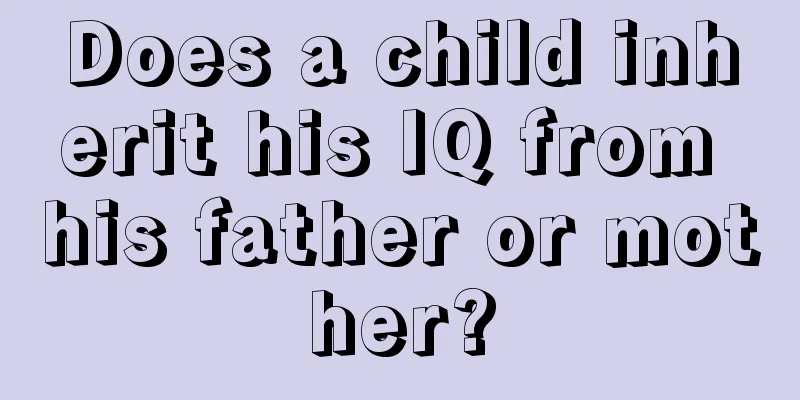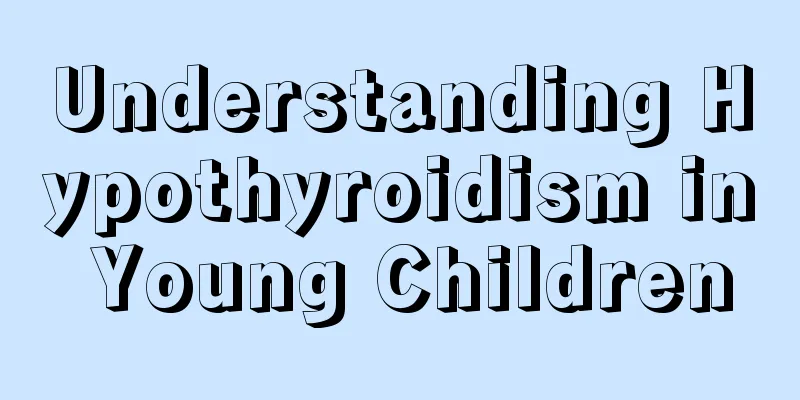What are the symptoms of nasal hypertrophy in children?

|
Turbinate hypertrophy is a common chronic nasal disease. With the increasing incidence rate, the disease has become more and more common in younger children, and many children are gradually suffering from turbinate hypertrophy. However, many parents are not aware of the symptoms of nasal concha hypertrophy and fail to detect the condition in time, thus delaying treatment. Below, the editor will introduce to you the symptoms of enlarged nasal concha, and I hope parents will take a look at it carefully. Turbinate hypertrophy refers to the long-term influence of inflammation on the nasal concha, which causes edema of the nasal concha mucosa, resulting in nasal obstruction, great harm, and even serious complications such as emphysema, cor pulmonale, and asthma. 1. Systemic manifestations: There are often systemic nutritional and developmental disorders, mainly manifested as chronic poisoning reflex neurological manifestations, such as dull expression, chest tightness and anxiety, poor lung expansion, which may lead to pigeon chest or flat chest over time. A small number of people may develop cor pulmonale or even acute heart failure due to chronic nasal obstruction and long-term hypoxia. The symptoms include open-mouth breathing during sleep, snoring with the tongue root falling back, restless sleep at night, frequent nasal discharge, occlusive nasal sounds when speaking, and slurred speech. Due to long-term mouth breathing, the development of facial bones is hindered. 2. Partial manifestations: Children may develop otorhinolaryngology and other manifestations due to obstruction of the posterior nasal cavity and the pharyngeal opening of the Eustachian tube by enlarged adenoids. The maxillary bone becomes longer, the hard palate is high and arched, the dentition is irregular, the upper incisors are exposed, the lips are thick, the face lacks expression, and there is a dazed look, forming an "adenoid face". There is a movement disorder between swallowing and breathing, choking and coughing often occur, the excrement affects the respiratory mucosa, and it is easy to suffer from bronchitis. Obstruction of the Eustachian tube can easily lead to non-suppurative otitis media, resulting in reduced suction and retraction of the tympanic membrane. The above is an introduction to the symptoms of turbinate hypertrophy. In fact, turbinate hypertrophy not only affects the physiological function of the nasal cavity, but also affects the functions and metabolism of other organs. Therefore, we all need to have a certain understanding of the dangers and symptoms of the disease in order to prevent it before it happens, so that the disease can be discovered early, checked early, and treated in time. |
<<: How can children with spleen deficiency grow taller?
>>: What are the tests for ADHD in children?
Recommend
What's wrong with the protruding bones on both sides of the baby's head?
For parents, once they find any abnormality in th...
How to relieve stomach pain and nausea in children?
Children often experience gastrointestinal pain d...
Why does my child keep farting?
There are many happy things in the process of tak...
What can’t a two-year-old baby eat because of poor digestion and absorption?
If a child has indigestion, in addition to taking...
What do children with obesity eat?
The phenomenon of childhood obesity can be said t...
Signs that your baby will talk
For a new mother, the biggest surprise is when he...
How to treat non-gonococcal urethritis in children
Non-gonococcal urethritis is a physical disease o...
What are some appetizer recipes for 2-year-old babies?
Nowadays, material living conditions are getting ...
Can I supplement calcium when my baby is coughing?
It is quite common for babies to have colds and c...
Why do children grow slowly?
Children's physical health and growth and dev...
What to do if your one-year-old baby is anemic
Anemia in babies is a very common phenomenon, and...
Will otitis media in children heal on its own?
Otitis media, also known as middle ear infection,...
What are the symptoms of concussion in children?
Since the nerves in the human brain are very frag...
3 year old baby crying at night
It is normal for babies to cry, and there are man...
What to do if a child has a fever in winter
Children have limited resistance, and it is easy ...









